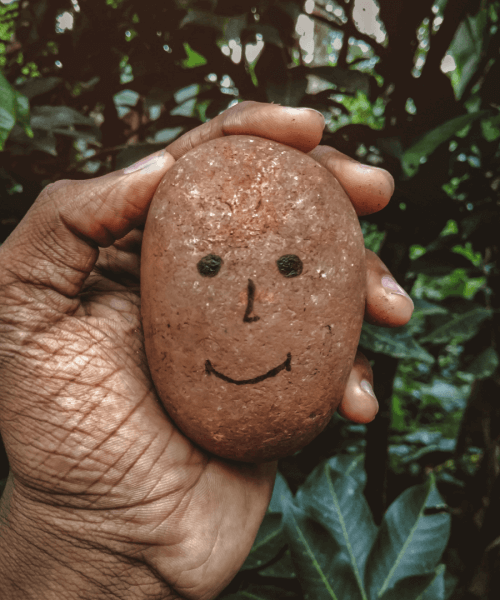Are you feeling overwhelmed lately – as if you are thinking about everything and anything all at once? Maybe you are feeling more exhausted than usual (we’ve all been there). Perhaps your back or neck is full of tension, you’re having trouble sleeping, or you’re simply more careless. For most adults, days are filled with responsibilities, activities, reminders, and life events. Not to mention the responsibilities that come along with various roles you may play (coach, parent, caregiver, employee, manager, volunteer, organization member). It is no wonder you’re overloaded!
Fight – Flight – or Freeze

Over time, this response system can be triggered without actual threats to survival. Our bodies can become overloaded with this “false alarm”. What we perceive as a danger (i.e. running late to work) is not actually a life-or-death crisis. Stress hormones flood the system, breathing shallows, hearts race, glands sweat and bodies jolt in response. Sometimes this can trigger a panic attack. Even if you have never had a panic attack, you most likely know this knee-jerk feeling (picture slamming on the brakes while you’re in traffic).
Here’s the good news! There are ways to help the body’s knee-jerk alarm system. You don’t have to react and feel helpless or frozen. The first step is realizing that this is something that happens to you. Once you acknowledge this and familiarize yourself with the signs that your body is entering flight-flight-or freeze, you can choose what to do next.
Grounding
Certain techniques can help calm our bodies. Most of these techniques are referred to as grounding techniques or relaxation techniques. Today, let’s talk about grounding. Grounding means being connected to your body and surroundings in the present moment. Think being in the here-and-now or ‘being in the moment’.
You may have heard the phrase “feeling grounded” referring to someone who is practicing a meditation or yoga exercise. Or perhaps someone who says “being in nature is very grounding for me”. You can be grounded anywhere at anytime. You don’t need a perfect sunset or a yoga mat to do so (but that does sound lovely).
When practiced regularly, grounding is an effective coping strategy for stress reduction and panic reduction. The key is to practice regularly; not just when in a crisis. Particularly if you are experiencing a generalized feeling of overwhelm or emotional exhaustion. You can give yourself 5 or 10 minutes a day to practice grounding. Many find it easiest to incorporate into their morning or evening routines (say, after showering or after dinner). If you find it helpful, you can set a reminder in your phone or in your agenda to begin. Below I will describe two grounding techniques to get you started.
Let’s practice grounding right now-
Chair grounding
-Sit upright in a chair with your back fully supported
– Have both feet on the ground. Feel the soles of your feet in your shoes and the contact your shoes have with the floor/ground beneath you
– Let your hands and arms relax on your lap where they naturally fall, palms facing down
Take a moment to notice how your legs feel firmly planted on the ground. Feel the connection of your body to the chair you are in. Do you notice any sensations? Is the chair firm, soft, comfortable, still? Any parts of your body holding tension or feeling strong? Do you feel temperature changes? Do you notice your surroundings? Breathe, as you hone into the experience of sitting in the moment just as you are.
If thoughts cross your mind, you can notice their passing or their presence but you don’t have to hold onto them. When your mind wanders, that’s okay. Minds do this. Do not worry about it. Instead, allow the mind to drift off and notice the drifting. Then, bring the mind to the awareness of what is being felt and experienced in the moment. Pay attention to your five senses just as they are. You can set a timer for 2 minutes, 5 minutes, 10 minutes or as long as you want to practice this exercise. If you prefer to use an audio, search ‘sitting meditation’.
Object grounding
You can use any object in this exercise (a raisin, a stone, a seashell, a piece of clay, etc.). For the sake of explaining the exercise, imagine holding a stone. You will approach the stone with a mindset of curiosity; as if this were the first time you have ever seen a stone. Think of it as if this were a foreign object you are encountering. Hold the stone in your hand, feel the texture. Ask yourself- what do you feel? Is it smooth? Are there sharp edges? Is the stone rough? Run your fingers around it some more and fully take in this object.
Think about where the stone may have come from. Was it part of a canyon, was it in the ocean, was it sitting in a park? Now put the stone up to your ear. Run your fingers against it. Does it make sounds? Put it up to your nose. how does it smell? Take a look at the stone- what colors do you see? Does it look weathered? Does it form a shape that is recognizable? Take a few moments to run through the exercise again slowly. See if there are any new experiences you notice.
Complete the exercise by placing the stone down and taking a few deep slow breaths.
Reap the Benefits

Learn more about our Anxiety Therapy Services
Contact us for a free phone consultation.




2 thoughts on “2 Easy Grounding Exercises to Reduce Anxiety, Tension, and Stress”
Comments are closed.